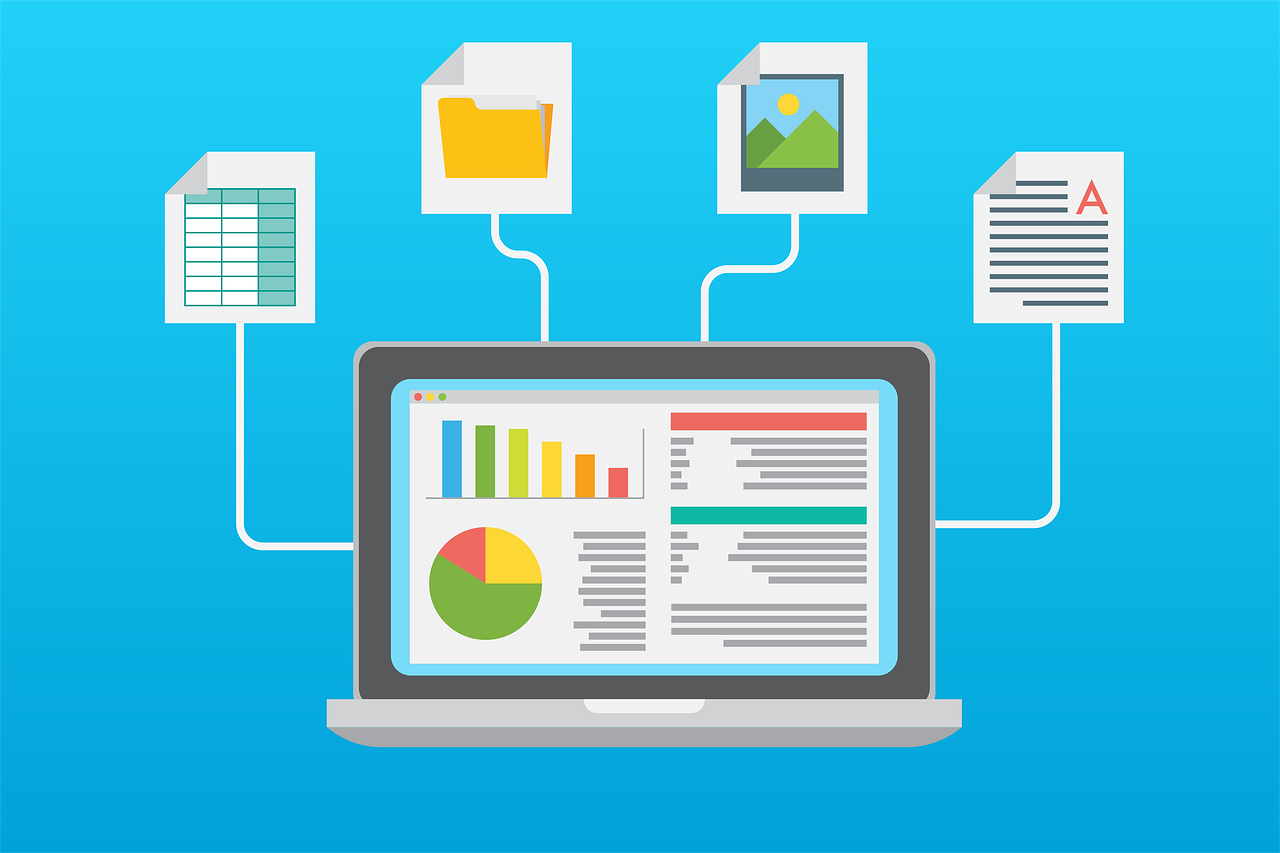In the bustling realm of online commerce, every click, scroll, and interaction carries weight. But, how do you decipher which clicks propel your business forward and which are mere digits in a vast ocean of data? **KPI metrics for online business** serve as the compass in this digital landscape, illuminating your path toward success. Imagine being able to gauge not just performance but potential—unearthing insights that foster growth, enhance customer engagement, and boost profitability. Wouldn’t it be exhilarating to transform nebulous data into actionable strategies?
As the digital marketplace continues to evolve, the right **KPI metrics for online business** become paramount. They’re not just numbers; they symbolize the lifeblood of your online ventures. What if you could identify the crucial indicators that not only reflect your current success but also forecast your future trajectory? This isn’t a distant dream; it’s an attainable reality for those ready to dive deep.
The time for complacency is over. Elevating your online business demands diligent attention to these pivotal metrics. Are you prepared to sift through the clutter and pinpoint exactly what drives your success? Join us as we unveil the essential **KPI metrics for online business**, equipping you with the knowledge to seize opportunities and navigate challenges with confidence. Let’s embark on this enlightening journey together!

Key KPI Metrics for Online Business Success
Understanding KPI Metrics
KPI metrics—Key Performance Indicators—are essential tools for evaluating the effectiveness of an online business. These indicators serve as compass points, guiding entrepreneurs toward their objectives. By diligently selecting and analyzing specific KPIs, businesses can gain profound insights into their operational health and overall performance. The selection of these metrics is often contingent on the unique goals of each business, which can range from increasing sales to enhancing customer satisfaction.
Considerations when choosing KPI metrics revolve around what exactly an online business seeks to achieve. For instance, an e-commerce site may gravitate toward metrics like conversion rates and average order value, while a content-based platform might prioritize engagement metrics such as average session duration or bounce rate. These nuanced distinctions in KPIs illuminate the multi-faceted nature of online operations and the diverse paths toward success.
The ever-evolving digital landscape mandates adaptability in monitoring these indicators. Regularly updating and reassessing which KPI metrics are the most pertinent allows businesses to stay agile. By leveraging data visualization tools and analytics software, managers can better interpret these metrics and pinpoint areas ripe for improvement. In essence, KPI metrics are not static; they require continuous refinement to maximize their efficacy.
Sales Metrics
Sales metrics are pivotal in assessing the financial trajectory of an online business. These indicators provide insights that directly reflect a company’s revenue-generating capabilities. One of the primary sales metrics is the conversion rate—the percentage of visitors who complete a desired action, like making a purchase. High conversion rates imply effective marketing strategies, user-friendly interfaces, and compelling product offerings. However, a deep dive into this metric often reveals more than surface-level success; it can uncover the complexities of a customer’s journey.
Another important KPI for online sales is the average order value (AOV). This figure assesses the average amount spent by a customer in a single transaction. By increasing AOV through cross-selling or upselling, businesses can enhance profitability without necessitating an influx of new customers. An impactful tactic here involves offering complementary products or bundled pricing, creating value for the consumer while boosting a company’s bottom line.
- Lastly, repeat purchase rate is an essential KPI metric, illustrating customer loyalty and satisfaction. A higher rate indicates that customers are satisfied with their initial purchase and are likely to return for more.
Customer Engagement Metrics
In the realm of online business, customer engagement metrics are invaluable in gauging how well a brand interacts with its audience. Metrics such as return visitor rate and time on site serve as barometers for engagement levels. High return visitor rates suggest that customers find value in the content or products offered, while increased time on site enhances the likelihood of conversion.
Email open rates also provide a window into customer engagement. By examining how many recipients open marketing emails, businesses can understand the effectiveness of their subject lines and overall messaging strategy. This metric is crucial for refining future campaigns and ensuring higher engagement levels.
Furthermore, social media engagement—measured through likes, shares, comments, and overall reach—gives a holistic view of brand presence and customer interaction. By nurturing a vibrant social media community, businesses can foster relationships that translate into consumer loyalty and enhanced brand visibility.
- Moreover, understanding the customer journey can unveil further layers of engagement metrics. Tracking how users navigate through a site reveals potential bottlenecks in the buying process. Analyzing this data can lead to targeted improvements that enhance the user experience.
Website Performance Metrics
Website performance metrics are crucial for ensuring a seamless user experience, which is integral to the overall success of any online business. Two of the most notable metrics in this category are page load time and mobile responsiveness. Studies have shown that even a one-second delay in page loading can significantly decrease conversion rates. Therefore, optimizing website performance is not merely a technical necessity; it’s a strategic advantage that can lead to a dramatic uptick in user satisfaction and retention.
Equally important is mobile responsiveness. With an ever-growing portion of web traffic stemming from mobile devices, businesses must ensure that their websites are optimized for all screen sizes. An inability to provide a seamless mobile experience could alienate potential customers in a heartbeat. Effective tools for testing responsiveness offer businesses critical insights that can lead to substantial improvements in user engagement and, ultimately, sales.
- Furthermore, analyzing metrics associated with site navigation tells you which paths users take through the website and where they tend to drop off. This information is vital for streamlining the user experience and encouraging a smoother path to conversion.
Financial Performance Metrics
Monitoring financial performance metrics equips online businesses with an understanding of their economic viability. Metrics such as gross profit margin and net profit margin provide clarity regarding both immediate profitability and long-term sustainability. Gross profit margin reflects the efficiency of production and pricing strategies, while net profit margin offers a comprehensive view of profitability after considering all expenses and costs.
Cash flow is another critical financial performance metric. A healthy cash flow indicates that the business has sufficient liquidity to meet obligations and invest in growth opportunities. Analyzing cash flow patterns can also reveal seasonal fluctuations, helping businesses prepare for leaner times while capitalizing on peak periods.
- Debt-to-equity ratio is yet another financial KPI worth examining. This ratio provides insights into the company’s financial structure and the balance between debt and equity financing. A high ratio might indicate a higher risk level, which is key information for stakeholder assessments.
Marketing Performance Metrics
In an age where digital marketing reigns supreme, understanding marketing performance metrics is essential for measuring the effectiveness of promotional efforts. One of the most significant metrics in this realm is customer acquisition cost (CAC). This metric reveals the total expenditure associated with attracting a new customer, including marketing and sales expenses. Reducing CAC while maintaining or increasing customer lifetime value is an objective that every business should strive for.
Return on investment (ROI) for marketing campaigns is another vital metric. By comparing the revenue generated from a campaign against its costs, businesses can identify which strategies yielded the most profitable outcomes. These insights empower marketers to allocate resources more efficiently, focusing on channels that drive the best results.
- Moreover, tracking the funnel metrics—from awareness to consideration to purchase—enables businesses to visualize how potential clients flow through the buying process. Understanding drop-off points can lead to more tailored marketing strategies and enhance overall campaign effectiveness.

Frequently Asked Questions about KPI Metrics for Online Business
What are KPI metrics for online business anyway?
KPI (Key Performance Indicator) metrics for online business are measurable values that help you track and assess the performance of your business objectives online. Think of them as your business’s vital signs!
Why should I care about KPI metrics?
Well, if you want your online business to thrive, you need to know what’s working and what’s not. KPI metrics give you insights into customer behavior and overall performance, helping you make informed decisions.
Which KPI metrics should I focus on first?
- Conversion Rate
- Customer Acquisition Cost (CAC)
- Customer Lifetime Value (CLV)
- Average Order Value (AOV)
- Website Traffic
What is a good conversion rate, and how do I calculate it?
A good conversion rate usually hovers around 2% to 5%, but it varies by industry. To calculate it, use the formula: (Total Conversions / Total Visitors) x 100.
How can I improve my customer acquisition cost?
To improve your CAC, try refining your target audience, investing in high-performance channels, and optimizing your sales funnel. Focusing on quality leads often reduces costs!
Why is Customer Lifetime Value (CLV) important?
CLV tells you how much money a customer is likely to spend throughout their relationship with your business. Knowing this helps you make smarter marketing investments!
How do I track these KPI metrics?
You can track KPI metrics using various tools like Google Analytics for website traffic, CRM software for customer data, and eCommerce platforms for sales metrics. It’s all about finding the right tools that fit your needs!
What if my KPI metrics aren’t improving?
Don’t panic! Use that data to identify problem areas. Maybe your marketing strategy needs tweaking, or perhaps you’re targeting the wrong audience. Regularly analyzing your metrics is key!
Are there any red flags I should watch out for?
Absolutely! Keep an eye on:
- Increasing customer churn rate
- Low engagement on your site
- Declining traffic or conversion rates
These could signal issues that need your attention.
Can I use KPI metrics for offline business as well?
You bet! Many KPI metrics can apply to offline businesses too. Metrics like sales per square foot, customer retention rates, and marketing ROI can help offline businesses thrive just as they do online.
Conclusion
Understanding and effectively utilizing key performance indicators (KPIs) is crucial for driving online business success. KPIs such as conversion rates, customer acquisition costs, and average order value serve as essential metrics that help businesses assess their performance and identify areas for improvement. By closely monitoring these metrics, online businesses can make data-driven decisions that enhance their marketing strategies, optimize customer experiences, and ultimately increase revenue. Additionally, the importance of tracking user behavior through metrics like bounce rates and session durations cannot be overstated, as they provide invaluable insights into customer engagement and satisfaction.
Moreover, regularly reviewing KPIs enables businesses to stay agile in today’s dynamic online environment, allowing them to pivot strategies and adapt to changing consumer demands swiftly. The implementation of tools and technologies that facilitate real-time data tracking can significantly enhance a company’s ability to respond to market trends effectively. In conclusion, a comprehensive understanding of KPI metrics for online business is not just beneficial but necessary; it lays the foundation for sustainable growth and long-term success in an increasingly competitive digital landscape. By prioritizing these metrics, businesses can position themselves ahead of the curve, ensuring resilience and adaptability in their online ventures.
Recommendations
In today’s competitive landscape, many aspiring entrepreneurs grapple with the multifaceted challenges of establishing a lucrative online business. From developing effective sales funnels to navigating complex marketing strategies, the path can be daunting. However, there is a beacon of hope for those eager to build a sustainable income stream with minimal technical barriers.
Enter the Ambassador Program from John Thornhill. This comprehensive program empowers individuals to effortlessly clone John Thornhill’s proven 7-figure funnel, effectively streamlining the process of launching an online business. Imagine having a turnkey solution that allows you to generate high-ticket commissions on autopilot, all while taking less than 30 minutes to set up!
What sets the Ambassador Program apart is its holistic approach. With an integrated evergreen webinar and a 4-part workshop, you’ll have the tools necessary to introduce other entrepreneurs to the program, expanding your reach and revenue potential. Plus, you won’t be left to navigate this journey alone; the program is designed for individuals with zero technical skills, enabling anyone to harness its capabilities.
The benefits are compelling:
– **Cloning Potential:** Gain access to a proven sales funnel that has already generated considerable success, minimizing the trial-and-error phase often experienced by new entrepreneurs.
– **Turnkey Solution:** The program provides everything you need, including sales funnels, email follow-ups, and backend offers, creating a truly “business-in-a-box” experience.
– **Done-for-You Traffic:** No need to grapple with acquiring leads by yourself; the program includes strategies for generating traffic without the steep learning curve.
– **Built-in Affiliate Program:** Monetize your efforts with ease by promoting the Ambassador Program itself, allowing you to tap into a burgeoning industry projected to reach $1 trillion.
Overall, the Ambassador Program from John Thornhill emerges as an invaluable resource that not only alleviates the burden of technical know-how but also propels you toward achieving your entrepreneurial aspirations in a rapidly growing market.
Take the leap toward transforming your financial future today. Don’t miss out on this unique opportunity to cultivate your business and cultivate a life of financial freedom. Visit the official website now to explore the possibilities and secure your success!


